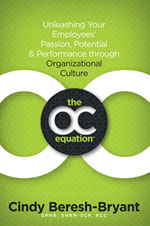 Ok, let’s dispel the myth right here, right now – employee happiness does not equal employee engagement and without employee engagement your organization can’t be as successful as it could be. Your organization can give away a lot of “perks” to employees that make them perfectly “happy” but that doesn’t insure they will deliver the results your organization needs or wants. After all, maybe your employees are perfectly “happy” doing nothing!
Ok, let’s dispel the myth right here, right now – employee happiness does not equal employee engagement and without employee engagement your organization can’t be as successful as it could be. Your organization can give away a lot of “perks” to employees that make them perfectly “happy” but that doesn’t insure they will deliver the results your organization needs or wants. After all, maybe your employees are perfectly “happy” doing nothing!
One simple truth:
All engaged employees are happy, but not all happy employees are engaged!
The only thing that can ensure the delivery of results is an Organizational Culture (OC) that inspires your employees to invest in the organization with mind, body and soul. It’s when employees are inspired to invest themselves in the success of the organization first and their personal success second that results flourish.
Now don’t get me wrong, there is a body of research out there that indicates that making employees happy is the most direct and powerful way to impact your OC. As a matter of fact, research published by iOpener Institute, a consultancy that specializes in maximizing the performance, productivity and happiness of business-critical employees, indicates that Happy Employees:
- Stay twice as long in their jobs
- Believe they are living up to their potential twice as much
- Spend 65% of their time feeling energized
- Are 58% more likely to help other colleagues
- Identify 98% more strongly with the organization’s values
- Are 186% more likely to recommend the organization to a friend
Wow! You might say. And like many of my students at Athens State University, you might be inclined to immediately start implementing programs and perks to make everyone “happy”. But nowhere in iOpener’s research did it indicate that these numbers directly correlated with improved business results.
While we would all like to have happy employees in our organizations, it doesn’t do much good if the business results aren’t improving to keep us ahead of the competition. For example, early in my career, I worked for Black & Decker™ Power Tools in Fayetteville, NC. At that time we had a plethora of long term employees who were effectively “retired in place” and perfectly happy to be there. They showed up for work every day, but put in just enough effort to get by with little concern for how they could positively impact the business results to help B&D remain competitive. Now by no means were they bad employees, they just weren’t connected and engaged with the organization and its mission, vision and purpose.
According to Sharlyn Lauby, an HR pro turned consultant, “it’s very possible to have happy employees who are not connected to the organization. The employee who comes in, does their job and goes home. They love it when no one bothers them. And, they will tell you so. “Just let me come and in do my job. Don’t make me talk to anyone.” Happy – yes. Engaged – no.”
Which brings us to a question of definitions.
- Employee satisfaction deals with happiness. Are employees happy at work?
- Employee engagement deals with employees’ connection to and with the organization.
Research by Towers Watson shows that ENGAGED employees can double operating margins. If engagement is high and combined with a sense of enablement and energy (i.e. OC) they can generate operating margins almost 3x higher than companies with low engagement. And that’s where Organizational Culture (OC) comes in.
Your OC is an intentional people strategy based on your business strategy that is specifically designed to support the six (6) basic employee needs and the organization’s needs, thus creating an indelible competitive advantage. It’s about leveraging the organization’s mission, vision and purpose in such a way as to inspire employees to invest in and connect with the organization at all levels – mind, body and soul and developing and implementing internal processes at all levels of the organization in support of your intentional OC. Through your OC, that inspiration and connection to and with the organization that the energy and passion for personal and professional results abounds!
According to a recent blog by Wall Street Journal, writer Jessica Pryce-Jones, “Performance and happiness at work are really high when employees feel they fit within their organizational culture. Not fitting in a job is like wearing the wrong clothes to a party—all the time. It’s hugely draining and de-energizing.”
Inspiration is external – motivation is internal
~ Hannah Paramore, Paramore l the digital agency
Inspiring and connecting employees through engagement is also not about motivation. As Hannah noted, motivation is internal. You’re either motivated or you’re not and no one can “make” you be motivated. Every employee is motivated by something. That can be power, position, money, perks or benefits, recognition, promotion, title, and the list goes on. The point is, employees are motivated by what they want, not necessarily what’s best for your organization. But INSPIRE an employee and you create a mutually beneficial, symbiotic relationship that transpires the ordinary to the extraordinary.
So, once again – it’s NOT making employees “happy”. It’s not about funky offices or “hotels”, onsite massages, or free stuff – it’s about inspiring from the inside to create a sustainable competitive advantage where both the employee and the organization excel.
– Cindy
If you’d like to receive blogs like these to your inbox, simply click here! We’d love to have you join our community!
Visit us: www.HRSolutionsByDesign.com

